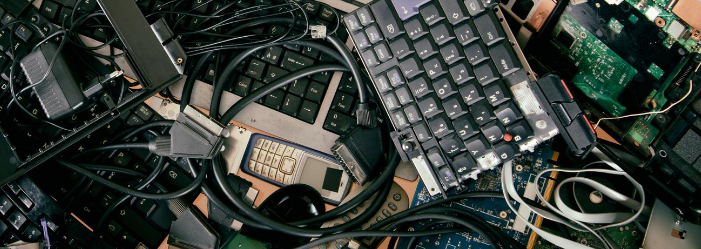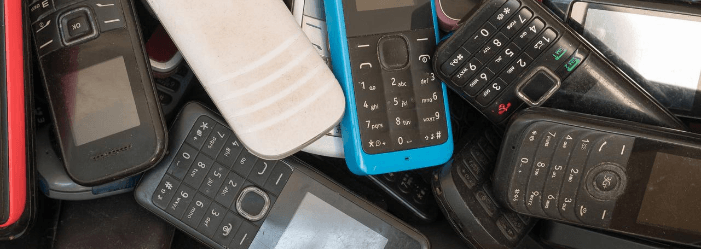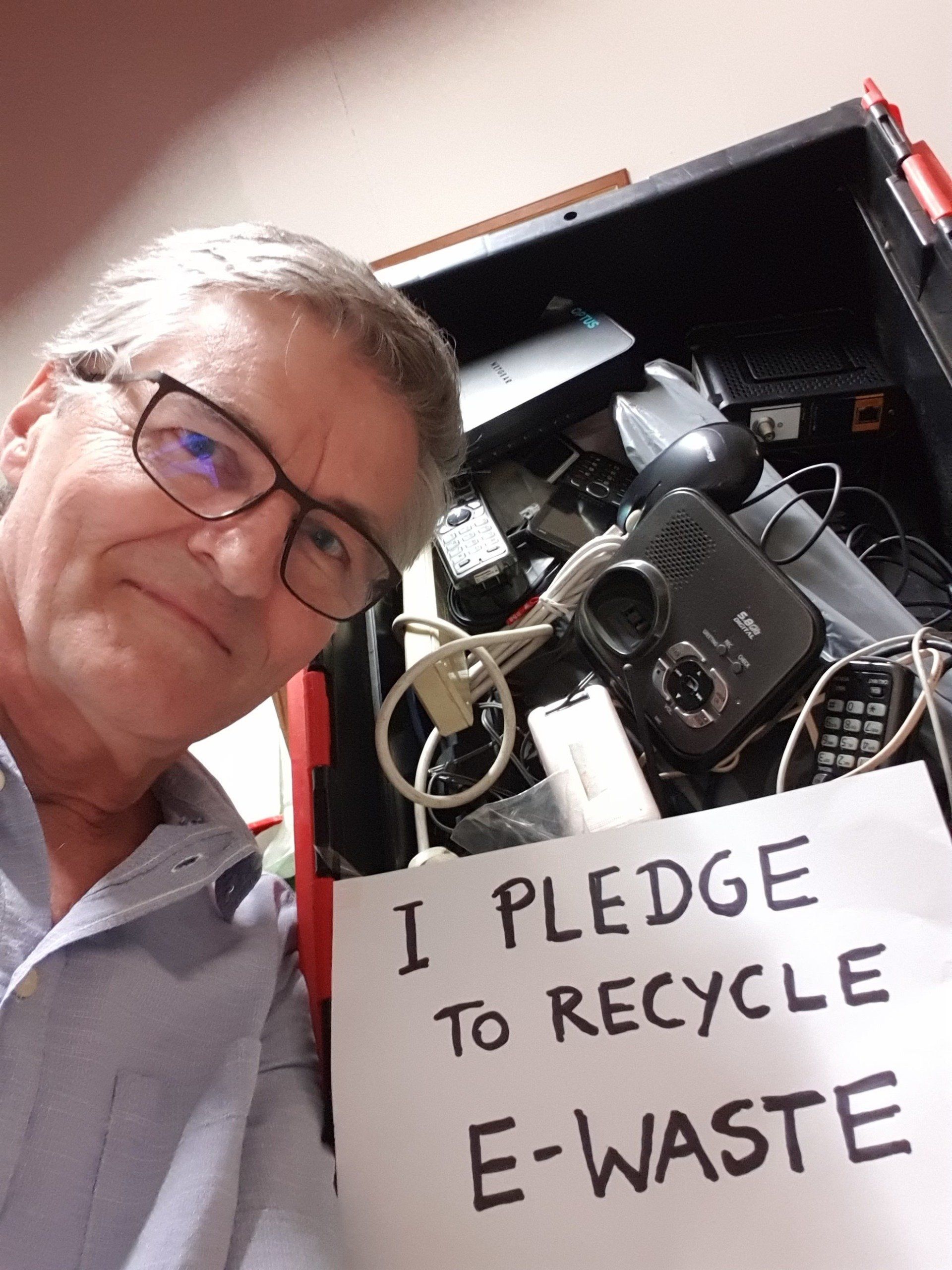It’s time to switch on to the growing e-waste problem
A couple of smartphones here. A couple of laptops there. Chuck in a TV (or two, or three) for good measure and you’re starting to resemble a human being living in the 21st century.
Our voracious appetite for electronic products is driving the world’s fastest growing waste stream. And it’s not just phones, computers and TVs causing the pile up – it’s the endless stream of consumer equipment, white goods and small household appliances too.
According to the UN’s
Global E-Waste Monitor 2020, we generated more than 53 million tonnes of e-waste in 2019. That’s up 21% in just five years. At the rate we’re going, it’s predicted the total amount will swell to around 74.7 million tonnes by 2030 – almost double the figure in 2014.
So what’s powering the rise in e-waste?
There’s no doubt that technology makes our lives easier, and it’s a good thing that more and more people around the world can actually afford convenient electronic products.
At the same time, the life span of products is getting shorter. Companies will even deliberately design them to fail prematurely or become out of date – e.g. upgrading the software and limiting (or even discontinuing) support for older models.
This is called
‘planned obsolescence’, and it’s about as insidious as it sounds. Coupled with fewer (and expensive) options for repair, it’s often cheaper to buy a new model than to fix an old one.
In many ways, it seems we’ve been conditioned to discard electronics at the tiniest hint of inconvenience – a sticky home button, a slightly reduced battery, a cracked surface, or even a sense of FOMO for a ‘cooler’ model (this one’s called perceived obsolescence).
The problem is, our unstoppable consumption of electronic products is outstripping our capacity to properly recycle or dispose of them safely. The biggest losers in this scenario? The environment, and us.
E-waste is responsible for 70% of the toxic chemicals found in landfill, such as lead, mercury, arsenic, beryllium and cadmium – which have damaging effects on soil, water, ecosystems and human health.
Over in Asia and Africa, there are
e-waste junkyards
that are so toxic they’re causing deaths from lead poisoning. In fact, in most developing countries, e-waste management infrastructure is underdeveloped at best, completely non-existent at worst.
Sadly, this means e-waste is often handled under shoddy conditions, causing severe health effects to workers and the children who live and play near the sites – from adverse birth outcomes and altered neurodevelopment, to increased and decreased growth.
Higher consumption rates also majorly increase the mining of metals and minerals needed for the production of electronic products in the first place – creating environmental problems well before our favourite gadgets even reach us.
It’s safe to say the global picture of e-waste recycling is glum. In 2019, only 17.4% of e-waste was formally collected and recycled – the other 80% or so is often illegally incinerated or dumped in landfill.
And this is all happening despite the fact that – when handled correctly –
90% to 95%
of e-waste components can be recycled.
Aussies are quick to upgrade, slow to recycle
Just like our relationship with
single-use plastics, our love affair with electronics in Australia is borderline obsessive.
We spend billions of dollars on gadgets every year – smartphones, TVs, washing machines, computers, hair dryers, electronic toothbrushes, air conditioners and much, much more. As long as there’s a plug or battery in the mix, we can’t help ourselves.
We also have more mobile phones lying around than people. We recycle fewer than 1% of TVs and around 10% of PCs and laptops. And we’re sending e-waste to landfill at three times the rate of general waste.
Unlike leading countries like
Switzerland and Japan, we’re clearly lagging when it comes to managing and recycling our e-waste.
Part of this has to do with recycling laws not covering the full scope of e-waste, such as the National Television and Computer Recycling Scheme, as well as a lack of knowledge about where to even take unwanted products.
Other reasons are more economic and psychological – thinking it will cost too much, or a fear of losing valuable data. Another big hurdle is simply getting old devices out of people’s drawers and cupboards.
A
survey by TechCollect
found that 43% of people are keeping old electronic devices just in case they need them again – hoarding them instead of disposing of them properly.
As far as regulations go in Australia, the eastern states are leading the way. South Australia and the ACT banned e-waste from going to landfill around a decade ago, while Victoria came in with a ban in 2019.
But if we’re to make real progress, the National Waste Policy needs to include the recovery and recycling of a wide range of electronic products – not just TVs and computers. There also needs to be more direct funding for local governments, as well as better compliance and auditing.
And at a deeper level, we need to move away from a traditional linear economy of “take-make-dispose” and embrace a circular economy.
The true costs of e-waste
While some of the materials in e-waste are downright toxic, others are downright valuable – such as copper, iron, gold, silver and platinum.
The UN’s Global E-waste Monitor 2020 valued the total amount of these materials (that weren’t recycled) at around US$57 billion. Just to put things into perspective, that’s greater than the GDP of most countries.
With better organised collection and recycling schemes, discarded e-waste can be seen as an economic opportunity. Harvesting valuable materials would not only create new jobs, but also reduce the environmental footprint of mining and decrease CO2 emissions.
While it’s clear that governments, manufacturers and companies around the world need to up their game and make electronic products more recoverable, recyclable and repairable, it’s heartening to hear that 78 countries now have a policy to manage e-waste – or are at least putting one in place.
There are also simple things you can do to curb the problem. Reduce how much technology you buy, recycle (& resell!) your mobile via
Mazuma, find your nearest e-waste nearest collection place and invest in environmentally-friendly products from the get-go. Or, you could do what our grandparents did and learn the art of repair – give it a little time, give it a little love and you’ll be amazed at the results.
Doug Whyte is a writer and copywriter from Sydney with a strong interest in environmental issues and sustainability.






